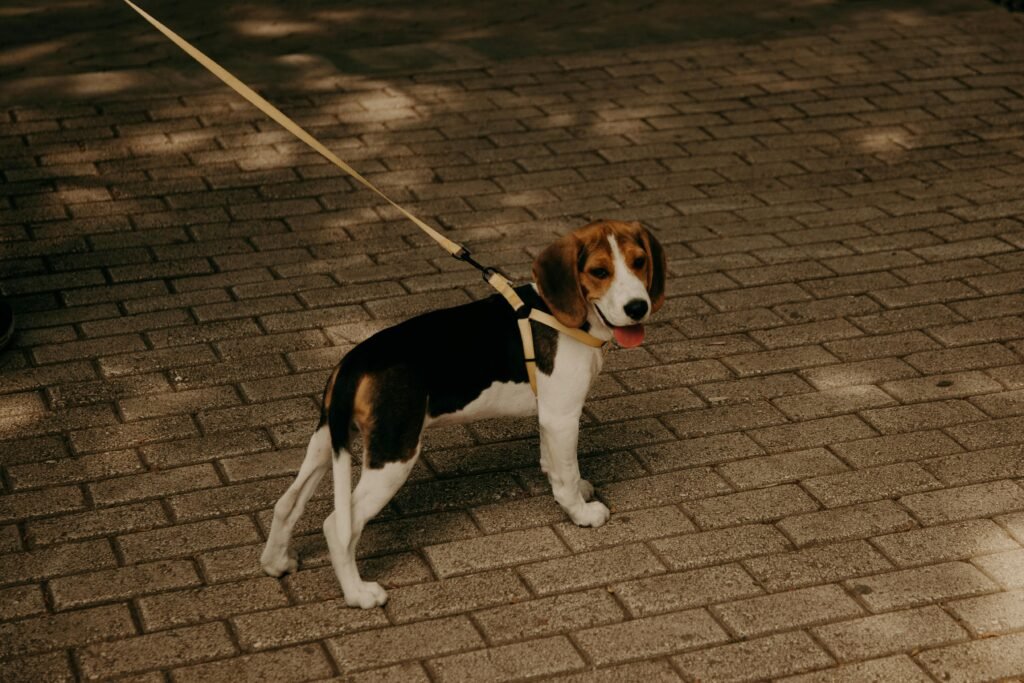The rhythmic click of paws on pavement, the vibrant energy of city streets, and the joy of exploring new sights and smells with your furry companion – city dog walks offer a unique experience for both you and your pup. But navigating bustling sidewalks and busy intersections requires careful planning and the right equipment. Here, we delve into the world of city dog walking, focusing on the crucial element of leash selection – determining the ideal leash length based on your dog’s size and age.
Safety First: Mastering the Urban Walk
City dog walks present a unique set of challenges compared to suburban strolls or leisurely hikes. Here’s what to keep in mind for a safe and enjoyable experience:
- Leash Laws and Responsible Ownership: Always familiarize yourself with local leash laws. Most cities mandate leashes for dogs in public spaces.
- Traffic Awareness: Be extra vigilant near busy streets and intersections. Maintain control over your dog to avoid sudden dashes into traffic.
- Respecting Pedestrians: Keep your dog close on crowded sidewalks to avoid obstructing pedestrian flow. Use sidewalks on the side away from traffic for added safety.
- Curb Appeal: Always carry waste disposal bags and dispose of your dog’s waste responsibly. This is essential for maintaining a clean and pleasant environment for everyone.
- Sensory Overload: City environments can be overwhelming for some dogs. Watch for signs of stress, such as excessive panting or tail tucking, and take breaks in quieter areas if needed.
The Leash: Your Urban Walking Partner
The leash is your lifeline during city dog walks, ensuring both your dog’s safety and control in a stimulating environment. But with a variety of leash lengths available, choosing the right one can be confusing. Here’s how dog size, age, and temperament influence the ideal leash length:
Leash Length for Small Dogs (Under 25 lbs):
- Puppies: For tiny puppies still under development, a short leash (3-4 feet) is ideal. It allows for close control while potty training or navigating crowded areas.
- Adult Small Dogs: A standard 6-foot leash offers a good balance between control and freedom for well-trained small dogs. It allows them to sniff and explore within a safe range.
Leash Length for Medium Dogs (25-75 lbs):
- Puppies: Medium-sized puppies benefit from a 4-6 foot leash. This provides more control during training while allowing them some exploration room.
- Adult Medium Dogs: A 6-foot leash is generally suitable for well-behaved medium dogs. However, if your dog is energetic or easily distracted, consider a shorter leash (4-5 feet) for crowded areas or a longer leash (up to 8 feet) for less populated parks.
Leash Length for Large Dogs (Over 75 lbs):
- Puppies: Large breed puppies require a sturdy 6-foot leash for proper control during walks. Their strength necessitates a leash that can handle their weight and potential pulling.
- Adult Large Dogs: For well-trained large dogs, a 6-foot leash can be sufficient in most situations. However, for crowded areas or situations requiring extra control, a shorter leash (4-5 feet) might be safer. For open spaces with good visibility and responsible ownership, a longer leash (up to 10 feet) can be used for supervised exploration.
Beyond Length: Choosing the Right Leash Type
Leash length is crucial, but leash type also plays a significant role in city dog walking. Here are some popular options:
- Standard Leash: The classic nylon or leather leash is versatile and available in various lengths.
- Retractable Leash: These offer convenience but require responsible use in crowded areas. Ensure you can maintain control of the locking mechanism.
- Double Leash: Ideal for walking two dogs simultaneously, allowing for individual control while keeping them close.
- Traffic Leash: A short, sturdy leash (1-2 feet) ideal for maintaining close control near traffic or in busy areas.
Training and Communication: Keys to a Successful City Walk
Regardless of leash length, proper training and clear communication are essential for safe and enjoyable city dog walks. Here are some tips:
- Heel Training: Teach your dog to walk calmly beside you on a loose leash. This ensures better control and avoids pulling.
- Leave It Command: Train your dog to ignore distractions like dropped food or other dogs. This is crucial in a stimulating city environment.
- Positive Reinforcement: Reward good walking behavior with treats, praise, and affection

